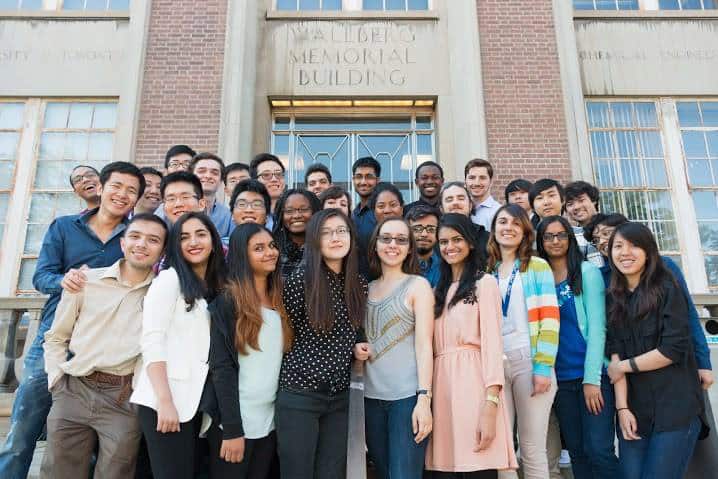What if there was a way to get bacteria culture to help clean up toxic substances? This year a team of young researchers from U of T aim to answer exactly that question at the 2015 iGEM competition at the Hynes Convention Centre in Boston. They will be presenting their main project, which focuses on engineering a bacterium to degrade toluene, one of many toxic compounds found in oil sand tailing ponds.
iGEM — or, the International Genetically Engineered Machine — is a non-profit international community that grants students the opportunity to apply synthetic biology to existing world problems and present their project in front of a global audience, which includes 280 teams. Synthetic biology is a combination of engineering and biology, and iGEM gives students access to resources that make it possible for them to explore independent research outside of their graduate and undergraduate curriculum.
“It’s mainly student run, so it gives the students the opportunity to leading a project, managing a project as well as on the scientific side all your protocols and experimental knowledge,” explains Katariina Jaenes, one of the wet lab team leaders and a microbiology student at U of T.
U of T’s chapter has been participating in the giant jamboree since 2006 with growing recognition each year. U of T received a gold medal at iGem in 2013 for their project on biofilm formation, a bronze medal in 2014 for the “finding plasmo” project, and this year the team is working on an environmental project to promote and possibly implement responsible management of tailing ponds.
“When they are purifying oil sand, they need to use water on site, so they use the water from [the] Athabasca river in their oil processing. But they cannot just throw away that water, the government of Alberta demands that they store that water on site in tailing ponds,” explains Jaenes.
Tailing ponds from oilsand extraction contain toxic chemicals including polycyclic aromatic hydrocarbons, BTEX — Benzene, Toluene, Ethyl benzene and Xylene — ammonia, lead, mercury, and other metals. The U of T’s iGEM team believes that one day their bacterial solution could potentially be used at an industrial scale.
“We are trying to degrade toluene which is one of them, those chemicals all share similar chemical structure,” said Seray Cicek, a wet lab team lead and a biomedical engineering student. “ If we are successful in implementing this in toluene, chances are that we will be able to use it in other molecule as well,” added Cicek.
iGEM U of T has successfully received €5,000 after submitting their proposal to SYNENERGENE. They are currently working with Delft University of Technology, a university from the Netherlands on the Application and Techno-Moral Scenarios to further develop their design, analyze cost and address concerns.
“The two methods of delivery of our product would be either ‘Mammoth’ or a pill — the Mammoth being the bioreactor or a pill which is just a small capsular device that we can throw into [a tailing pond]” said Anthony Zhao, computational lab lead, is also studying immunology and neuroscience. The team proposed these two hypothetical products in their proposal to SYNERGENE.
According to Zhao, the Mammoth would be able to suffice the transformed toluene — degrading bacteria with nutrients through a lysogeny broth (LB) medium — ideal for bacteria growth and oxygen.
“We would need to pump the tailing pond into the Mammoth and pump out bioremediated products, whereas you can just dump the pills into tailing ponds and retrieve them later,” added Zhao.
The transformed bacteria with the degrading pathway would be grown inside the bioreactor. The contaminated water is pumped into the contained space with the transformed E.coli, the toxic compound is degraded and the bioremediated product is pumped out.
The team is currently in the process of making the plasmid and they are also creating a miniature prototype of the Mammoth bioreactor to be displayed.
Other future plans include an arrangement of a panel discussion with academics from microbiology, law, and environmental biology in Calgary and nearby universities.


